Nick Mamatas's Blog, page 50
July 30, 2013
Tuesday quick notes
In Tunisia, the largest labor union called on Tuesday for the dissolution of the Islamist-led government and the interior minister offered to resign as a political crisis deepened. Continuing amazing things from Tunisia especially.
Of course, we have to keep that sort of thing from happening again, so the court will likely bury Bradley Manning deep.
How bad is the economy in Greece? McDonald's is closing. There are all of three left. When the last one fails, what will prevent an al-Qaeda takeover???
In trivial news, Quotes Every Man Should Know, aka How Nick Became Completely Debt-Free, will be out in two weeks. If you like, uh, quotes, why not buy a copy? I'm just kidding—nobody ever buys these books for themselves. Go buy it for someone you have a social obligation to, but don't like very much.
Of course, we have to keep that sort of thing from happening again, so the court will likely bury Bradley Manning deep.
How bad is the economy in Greece? McDonald's is closing. There are all of three left. When the last one fails, what will prevent an al-Qaeda takeover???
In trivial news, Quotes Every Man Should Know, aka How Nick Became Completely Debt-Free, will be out in two weeks. If you like, uh, quotes, why not buy a copy? I'm just kidding—nobody ever buys these books for themselves. Go buy it for someone you have a social obligation to, but don't like very much.
Published on July 30, 2013 09:33
July 26, 2013
THE WOLVERINE
The Wolverine was an okay movie. It was certainly better than the last Wolverine movie, which we discussed back in 2009. It doesn't quite reach the level of the mythical "good popcorn" movie—that is, an exciting action film with explosions and a plot that makes sense and characters with explicable motivations—but it's okay.
I took garnetlocks
to last night's preview showing (brought to you, well me, by Virgin America, so we didn't have to wait on the riff-raff line) and whispered to her as the 3d film began, "I heard this was based on a true story." And indeed, the movie begins with the bombing of Nagasaki! POW Wolverine sees a Japanese soldier free some GIs from a pen to give them a chance to run for it, and in turn saves the soldier's life. They outrun the bomb's shockwave, hide in a well, and Wolverine absorbs all the heat and fire, which he can because he's a superhealy mutant.
garnetlocks
to last night's preview showing (brought to you, well me, by Virgin America, so we didn't have to wait on the riff-raff line) and whispered to her as the 3d film began, "I heard this was based on a true story." And indeed, the movie begins with the bombing of Nagasaki! POW Wolverine sees a Japanese soldier free some GIs from a pen to give them a chance to run for it, and in turn saves the soldier's life. They outrun the bomb's shockwave, hide in a well, and Wolverine absorbs all the heat and fire, which he can because he's a superhealy mutant.
Anyway, Nagasaki was hit by a nuclear bomb. See, an historical event! True story.
Even more anyway, we cut to Wolverine sleeping under a rock somewhere in Alaska many decades later. He's very upset after the events of X3. He dreams of Jean Grey, whom he killed, every night, and wakes up screaming, as you would do if you were in love with a dead woman with all the charisma of a nightstand from Ikea. Maybe the Nordli, or the Nyvoll. Some hunters kill his friend, a bear, and then a manic pixie dream ninja comes to fetch him.

This girl is in the movie...
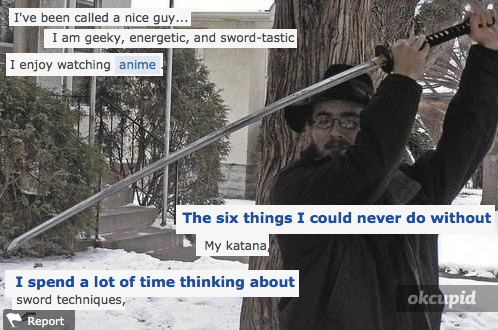
...because this boy is in the audience.
The fellow Wolverine saved back in WWII, Yashida, is now a zillionaire with cancer and a very attractive oncologist. He has an offer for Wolverine: he'll take Wolverine's healing power away from in and in exchange...Wolverine gets to die of old age, or perhaps even die from eating sardines from an expired tin, just like normal people. Amazingly, Wolverine doesn't immediately take the guy up on this generous offer. As an aside, I'd like to offer you, my dear readers, the opportunity to send me all your money, which I will spend. In exchange, you get to learn something about budgeting and hustling to pay your bills.
Yashida has a son, who is the sort of asshole who does kendo sparring as his father dies in the next room, and a granddaughter who is super-cute, engaged to the Minister of Justice, and ready to throw herself into the sea at the slightest provocation. If this movie taught me anything about Japan, it is that there is a katana available is every room, and that everyone is very eager to die except for one old man. Who does die...or does he! And then the granddaughter is kidnapped by yakuza...or is she! And then the oncologist turns out to be a super-villain...or is something else going on with her? No, no nothing else is going on.
Wolverine springs into action with his now familiar bloodless knuckle-knife fights, but there's a problem. He's not healing as fast as he once was. You may remember the idea of a superhero either losing his powers or losing control of them from virtually every other superhero movie. There's a lot of that in this film—stuff from other movies, but just a teeny difference. The Wolverine has some good action sequences. Nothing innovative, but the quantitative changes are enough. There's a fight atop a moving train, but this time it's a bullet train going 300 miles per hour, so everyone is just mostly clinging on for dear life. Instead of one bit when the train approaches a signal or tunnel, there are seven or eight. It's actually quite thrilling. There's a climactic fight with a huge villain on the rim of a giant hole as in every other movie, but then everyone falls down the hole and keeps fighting anyway. (A second hole, in the form of a cliff, opens up later for the real finale.) Wolverine and the granddaughter, fresh from a dead grandpa and yakuza gunfights, fall into bed together, but the bed's a futon! See, shit's totally different now. A sexy blonde lady ends up being a total slinky baddy, but she's also a philosophical weirdo!
Anyway, then a lot of fighting happens, Wolverine gets better, and with the help of the two women pals, kills everybody. Fuck yeah and such! There are, of course, problems with the film. There's a now-inevitable archer character who heads up the "Black Clan", but all he and his pals do is make trouble for Wolverine to extend the third act. Were were they when...well, at any point when they could have been useful for their master's secret goal. The big deal is that the old man designs some Silver Samurai armor to a) keep him alive for a few more days b) beat up Wolverine and c) cut off Wolvie's claws to d) get to the bone marrow. But the Viper had already sapped Wolverine's powers by inserting a little doodad in him when he slept. Why not just take the bone marrow when Wolverine slept? We've seen that his claws pop out all the time when he sleeps! Why not just send the twenty-fifty members of the Black Hand to pin him down when he slept? The granddaughter asks Wolverine, "Who's Jean?" after hearing him shout her name in his sleep...but how does she know that Jean is a woman of whom she should be jealous. "Who's Gene? Is it Eugene Wiener, your old friend from your days playing stickball in Newark?" is just as good a question. Why does grandpa leave the company to his granddaughter instead to some bullshit fake identity he can claim once he regains his youth? Why does granddaughter try to kill herself, but then fight yakuza and struggle so hard to stay alive? Why does the Viper decide to slip into this little number at the last moment?
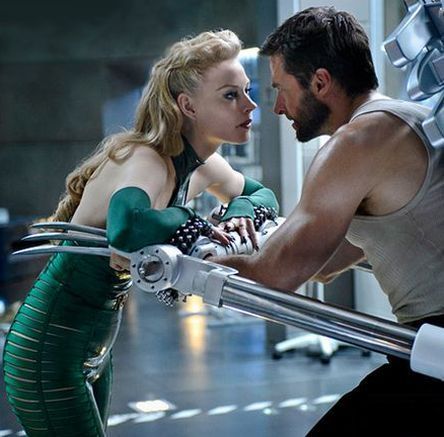

Oh yeah, because this guy's in the audience.
The Wolverine is one of those movies that is ruined by thinking too much. But at least it is sufficiently diverting, with well-choreographed fight scenes amenable to 3D, that it doesn't actually force you to think, "What? Wait! Why are these stupid people doing these things?!" until the very end.
I took
 garnetlocks
to last night's preview showing (brought to you, well me, by Virgin America, so we didn't have to wait on the riff-raff line) and whispered to her as the 3d film began, "I heard this was based on a true story." And indeed, the movie begins with the bombing of Nagasaki! POW Wolverine sees a Japanese soldier free some GIs from a pen to give them a chance to run for it, and in turn saves the soldier's life. They outrun the bomb's shockwave, hide in a well, and Wolverine absorbs all the heat and fire, which he can because he's a superhealy mutant.
garnetlocks
to last night's preview showing (brought to you, well me, by Virgin America, so we didn't have to wait on the riff-raff line) and whispered to her as the 3d film began, "I heard this was based on a true story." And indeed, the movie begins with the bombing of Nagasaki! POW Wolverine sees a Japanese soldier free some GIs from a pen to give them a chance to run for it, and in turn saves the soldier's life. They outrun the bomb's shockwave, hide in a well, and Wolverine absorbs all the heat and fire, which he can because he's a superhealy mutant.Anyway, Nagasaki was hit by a nuclear bomb. See, an historical event! True story.
Even more anyway, we cut to Wolverine sleeping under a rock somewhere in Alaska many decades later. He's very upset after the events of X3. He dreams of Jean Grey, whom he killed, every night, and wakes up screaming, as you would do if you were in love with a dead woman with all the charisma of a nightstand from Ikea. Maybe the Nordli, or the Nyvoll. Some hunters kill his friend, a bear, and then a manic pixie dream ninja comes to fetch him.

This girl is in the movie...

...because this boy is in the audience.
The fellow Wolverine saved back in WWII, Yashida, is now a zillionaire with cancer and a very attractive oncologist. He has an offer for Wolverine: he'll take Wolverine's healing power away from in and in exchange...Wolverine gets to die of old age, or perhaps even die from eating sardines from an expired tin, just like normal people. Amazingly, Wolverine doesn't immediately take the guy up on this generous offer. As an aside, I'd like to offer you, my dear readers, the opportunity to send me all your money, which I will spend. In exchange, you get to learn something about budgeting and hustling to pay your bills.
Yashida has a son, who is the sort of asshole who does kendo sparring as his father dies in the next room, and a granddaughter who is super-cute, engaged to the Minister of Justice, and ready to throw herself into the sea at the slightest provocation. If this movie taught me anything about Japan, it is that there is a katana available is every room, and that everyone is very eager to die except for one old man. Who does die...or does he! And then the granddaughter is kidnapped by yakuza...or is she! And then the oncologist turns out to be a super-villain...or is something else going on with her? No, no nothing else is going on.
Wolverine springs into action with his now familiar bloodless knuckle-knife fights, but there's a problem. He's not healing as fast as he once was. You may remember the idea of a superhero either losing his powers or losing control of them from virtually every other superhero movie. There's a lot of that in this film—stuff from other movies, but just a teeny difference. The Wolverine has some good action sequences. Nothing innovative, but the quantitative changes are enough. There's a fight atop a moving train, but this time it's a bullet train going 300 miles per hour, so everyone is just mostly clinging on for dear life. Instead of one bit when the train approaches a signal or tunnel, there are seven or eight. It's actually quite thrilling. There's a climactic fight with a huge villain on the rim of a giant hole as in every other movie, but then everyone falls down the hole and keeps fighting anyway. (A second hole, in the form of a cliff, opens up later for the real finale.) Wolverine and the granddaughter, fresh from a dead grandpa and yakuza gunfights, fall into bed together, but the bed's a futon! See, shit's totally different now. A sexy blonde lady ends up being a total slinky baddy, but she's also a philosophical weirdo!
Anyway, then a lot of fighting happens, Wolverine gets better, and with the help of the two women pals, kills everybody. Fuck yeah and such! There are, of course, problems with the film. There's a now-inevitable archer character who heads up the "Black Clan", but all he and his pals do is make trouble for Wolverine to extend the third act. Were were they when...well, at any point when they could have been useful for their master's secret goal. The big deal is that the old man designs some Silver Samurai armor to a) keep him alive for a few more days b) beat up Wolverine and c) cut off Wolvie's claws to d) get to the bone marrow. But the Viper had already sapped Wolverine's powers by inserting a little doodad in him when he slept. Why not just take the bone marrow when Wolverine slept? We've seen that his claws pop out all the time when he sleeps! Why not just send the twenty-fifty members of the Black Hand to pin him down when he slept? The granddaughter asks Wolverine, "Who's Jean?" after hearing him shout her name in his sleep...but how does she know that Jean is a woman of whom she should be jealous. "Who's Gene? Is it Eugene Wiener, your old friend from your days playing stickball in Newark?" is just as good a question. Why does grandpa leave the company to his granddaughter instead to some bullshit fake identity he can claim once he regains his youth? Why does granddaughter try to kill herself, but then fight yakuza and struggle so hard to stay alive? Why does the Viper decide to slip into this little number at the last moment?


Oh yeah, because this guy's in the audience.
The Wolverine is one of those movies that is ruined by thinking too much. But at least it is sufficiently diverting, with well-choreographed fight scenes amenable to 3D, that it doesn't actually force you to think, "What? Wait! Why are these stupid people doing these things?!" until the very end.
Published on July 26, 2013 12:13
July 25, 2013
Meanwhile, in Korea
My friend Kap and I are denounced as idiots by a former intelligence officer* for translating North Korean propaganda for bringing Kwangju Diary to the English-speaking world. Starts at 3:31. (The New York Review of Books liked it just fine, by the way.)
*Which shows that you don't need to be smart to work in intelligence.
Published on July 25, 2013 13:57
July 24, 2013
9.5 Theses on Art and Class
9.5 Theses on Art and Class
by Ben Davis is one of the more interesting books I've read lately. Initially I was disappointed—I thought the book would be an expansion of his actual 9.5 theses, but instead it's a collection* of essays—some reprinted and expanded from other work—dealing with the intersection of art and radical politics, specifically Davis's own politics. He's a member or, or at least a close contact of, the International Socialist Organization. (The book is also published by Haymarket Books, the ISO publisher.) This, as we say in the dialectic business, is both a strength and a weakness.
The strength is that Davis is able to cut through enormous amounts of art crit bullshit. He mocks himself in his intro. When he first encountered Marxists (presumably ISO cadre) as opposed to post-Marxists or academic Marxists or other school people, he writes that he "explained that I was trying to develop a theory of how Kierkegaard's theory of the aesthetic aspect of seduction stood as a critique of the Hegelian master-slave dialectic, through a reading of pick-up tips from Maxim magazine." Davis got over that shit right away, thankfully. He's able to historicize art-crit ideologies without being sucked in by any of them, and he has one of the more cogent simultaneous critiques of both the outsider artist and the notion that "anything can be art" I've ever read. (Much of that's based on an earlier piece about wannabe insider Billy Pappas, which is online here.) He's also happy to do a little reportage. Very little, but more than most in his position. He writes, on the topic of postmodernism: "I asked two friends of mine, both working curators, if postmodernism mattered to their practice at all. The answer was an unambiguous no. 'It makes you sound like an undergrad.'"
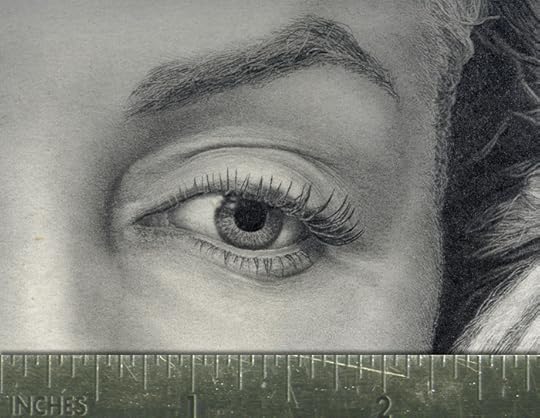
This extremely detailed drawing of a famous photo of Marilyn Monroe may seem like outsider art, but it isn't, because it's in dialogue with the art world. The craft of it, well that's a whole other issue...
Davis's work is also immensely readable, even quotable, and often humorous. Almost as though he's writing for an audience broader than a coterie of art world mandarins. ISO literature is the most readable and populist of the far-left milieu—I'm sure Davis knew how to write well before his encounter with the group, but I shudder to think of what would have happened to his rhetoric had he ended up in the orbit of the turgid goofballs of WSWS.org or *shudder* the Sparts. So, good for him! (This Davis article is apropos.)
The weakness is Little Lenin Disorder. In one chapter, Davis critiques the severe limitations of radical art collectives, which ape the form but not the content of worker collectives. (They can't, because art is a middle-class thing.) He also has many negative things to say about the Situationist International. They weren't so influential after all back during the events of May 1968, he tells us. Volumes can and should be written about how exactly the SI bobbed to the top of the revolutionary wave that summer, but Davis just punts. And he complains about artists who think their revolutionary activism should involve their art instead of, for example, joining Davis at his political meetings (presumably ISO meetings).
Occupy gets a bit of a drubbing too—they did good work, they got out on the streets, they spread worldwide, but where was the challenge to the state? Good question, but the answer can't be to point to the ISO or other vanguard or pre-vanguard formation and announce, "Your leaders have arrived!" (The answer, incidentally, is "Oakland.") And the vanguard party can't be because it hasn't been. Whether it's Occupy, or the anti-war movement of 2001-2003 or the anti-globalization movement of the 1990s, or the anti-war movement of the early 1990s, it's been very easy to find small groups who have all the answers and know the way forward. And it's been just as easy to find large groups of people who don't want to listen to them. Now of course there are many factors involved—in the US, the Democratic Party and its immense power to ride herd over people supposedly far to the left of electoral politics is a major one—but clearly one factor at this late date has to be the fundamental problem with vanguardist conceptions of revolutionary parties, and indeed the class formation of such small groups. (I remember that I met my first trust fund kids when I was a member of the ISO nearly twenty years ago. They form a semi-permanent leadership caste. Most of the rich kids I knew then are still in the group. The less rich ones from that era, with a couple of exceptions, are not.)
Or to put it more simply, when Davis points a finger at SI for only having a visible measure of influence over a massive general strike, and tsks tsks Occupy for an immense global movement that self-organized in a matter of weeks but then didn't strike a death blow to the world system, he's pointing four fingers back at himself and the ISO. "Yes yes, capitalism remains standing after all our work, Cde. Davis. And how many successful revolutions have you led again?" Luckily, Davis doesn't go on for too long.
Davis is on much stronger ground when it comes to political economy. He closely looks at the art market, how it influences art-making and art celebrity, and how dips and booms of the broader economy play a role in how artists, curators, museums, and buyers fit into the capitalist relations of production. A chapter on women in the arts is well-argued if not quite so radical as other essays. The essay on hipsters concludes, rationally, "that it is a waste to expel so much rhetorical ammo attacking what amounts to a a style." Indeed. He also introduced me to the term "ego-seum", thus saving me from having to read about it at the Forbes article just linked to (this being the art-politics equivalent of learning about sex from the streets, or worse, health class.) He also struggles mightily, and fruitfully, with the question of the politics of political aesthetic/aesthetically political, demonstrating and declaring at once that "[d]isentangling what is aesthetically affecting from what is politically effective is one of the vital tasks of criticism. Muddling the two can only do a disservice to both." And that should be the theme to Davis's next essay collection.
*Googling suggests that the book may have had the subtitle and Other Writings. The publisher should have stuck with that.
The strength is that Davis is able to cut through enormous amounts of art crit bullshit. He mocks himself in his intro. When he first encountered Marxists (presumably ISO cadre) as opposed to post-Marxists or academic Marxists or other school people, he writes that he "explained that I was trying to develop a theory of how Kierkegaard's theory of the aesthetic aspect of seduction stood as a critique of the Hegelian master-slave dialectic, through a reading of pick-up tips from Maxim magazine." Davis got over that shit right away, thankfully. He's able to historicize art-crit ideologies without being sucked in by any of them, and he has one of the more cogent simultaneous critiques of both the outsider artist and the notion that "anything can be art" I've ever read. (Much of that's based on an earlier piece about wannabe insider Billy Pappas, which is online here.) He's also happy to do a little reportage. Very little, but more than most in his position. He writes, on the topic of postmodernism: "I asked two friends of mine, both working curators, if postmodernism mattered to their practice at all. The answer was an unambiguous no. 'It makes you sound like an undergrad.'"

This extremely detailed drawing of a famous photo of Marilyn Monroe may seem like outsider art, but it isn't, because it's in dialogue with the art world. The craft of it, well that's a whole other issue...
Davis's work is also immensely readable, even quotable, and often humorous. Almost as though he's writing for an audience broader than a coterie of art world mandarins. ISO literature is the most readable and populist of the far-left milieu—I'm sure Davis knew how to write well before his encounter with the group, but I shudder to think of what would have happened to his rhetoric had he ended up in the orbit of the turgid goofballs of WSWS.org or *shudder* the Sparts. So, good for him! (This Davis article is apropos.)
The weakness is Little Lenin Disorder. In one chapter, Davis critiques the severe limitations of radical art collectives, which ape the form but not the content of worker collectives. (They can't, because art is a middle-class thing.) He also has many negative things to say about the Situationist International. They weren't so influential after all back during the events of May 1968, he tells us. Volumes can and should be written about how exactly the SI bobbed to the top of the revolutionary wave that summer, but Davis just punts. And he complains about artists who think their revolutionary activism should involve their art instead of, for example, joining Davis at his political meetings (presumably ISO meetings).
Occupy gets a bit of a drubbing too—they did good work, they got out on the streets, they spread worldwide, but where was the challenge to the state? Good question, but the answer can't be to point to the ISO or other vanguard or pre-vanguard formation and announce, "Your leaders have arrived!" (The answer, incidentally, is "Oakland.") And the vanguard party can't be because it hasn't been. Whether it's Occupy, or the anti-war movement of 2001-2003 or the anti-globalization movement of the 1990s, or the anti-war movement of the early 1990s, it's been very easy to find small groups who have all the answers and know the way forward. And it's been just as easy to find large groups of people who don't want to listen to them. Now of course there are many factors involved—in the US, the Democratic Party and its immense power to ride herd over people supposedly far to the left of electoral politics is a major one—but clearly one factor at this late date has to be the fundamental problem with vanguardist conceptions of revolutionary parties, and indeed the class formation of such small groups. (I remember that I met my first trust fund kids when I was a member of the ISO nearly twenty years ago. They form a semi-permanent leadership caste. Most of the rich kids I knew then are still in the group. The less rich ones from that era, with a couple of exceptions, are not.)
Or to put it more simply, when Davis points a finger at SI for only having a visible measure of influence over a massive general strike, and tsks tsks Occupy for an immense global movement that self-organized in a matter of weeks but then didn't strike a death blow to the world system, he's pointing four fingers back at himself and the ISO. "Yes yes, capitalism remains standing after all our work, Cde. Davis. And how many successful revolutions have you led again?" Luckily, Davis doesn't go on for too long.
Davis is on much stronger ground when it comes to political economy. He closely looks at the art market, how it influences art-making and art celebrity, and how dips and booms of the broader economy play a role in how artists, curators, museums, and buyers fit into the capitalist relations of production. A chapter on women in the arts is well-argued if not quite so radical as other essays. The essay on hipsters concludes, rationally, "that it is a waste to expel so much rhetorical ammo attacking what amounts to a a style." Indeed. He also introduced me to the term "ego-seum", thus saving me from having to read about it at the Forbes article just linked to (this being the art-politics equivalent of learning about sex from the streets, or worse, health class.) He also struggles mightily, and fruitfully, with the question of the politics of political aesthetic/aesthetically political, demonstrating and declaring at once that "[d]isentangling what is aesthetically affecting from what is politically effective is one of the vital tasks of criticism. Muddling the two can only do a disservice to both." And that should be the theme to Davis's next essay collection.
*Googling suggests that the book may have had the subtitle and Other Writings. The publisher should have stuck with that.
Published on July 24, 2013 01:30
July 22, 2013
The Royal Baby
Anyway, good thing it's a boy. Now Kate won't have to have sex with ol' Pumpkinhead again.
Published on July 22, 2013 13:23
Monday Quick Notes
Exciting news from Britain today! The debate over Britain’s food crisis has been going on since last year, but has exploded since May, when Oxfam and Church Action on Poverty released a report showing that in 2012, an estimated 500,000 Britons relied on food banks to feed themselves and their families, an increase from just 70,000 three years ago. It's cool though, that sort of thing makes for good television.
Local aspiring writers, please let me point you to a class I'm not running: Jay Ridler: Write Fast, Write Furious: Optimize Your Writing Time and Output should be a cool one-day class, Saturday July 27, 10 a.m. to 4 p.m, on picking up the pace of your own writing! Do check it out.
I feel the need to point to my old entry on the film Midnight Run. Also, here's a YouTube vid of Dennis Farina:
Local aspiring writers, please let me point you to a class I'm not running: Jay Ridler: Write Fast, Write Furious: Optimize Your Writing Time and Output should be a cool one-day class, Saturday July 27, 10 a.m. to 4 p.m, on picking up the pace of your own writing! Do check it out.
I feel the need to point to my old entry on the film Midnight Run. Also, here's a YouTube vid of Dennis Farina:
Published on July 22, 2013 12:32
July 18, 2013
Music for the Masses
A little bit of dayjob news, and happy personal news (happy for me anyway). Just announced at San Diego Comic Con: the graphic novel edition of All You Need Is Kill, with pencils and inks by Lee Ferguson, colors by Fajar Buana, and letters by Zack Turner. And the script of the adaptation, which holds quite closely to the original novel by Hiroshi Sakurazaka...it's me! So this is my first full-length graphic novel. Ten-year-old me is very pleased.
Check out the cover: the female lead isn't even attacking the aliens tits and/or ass first!
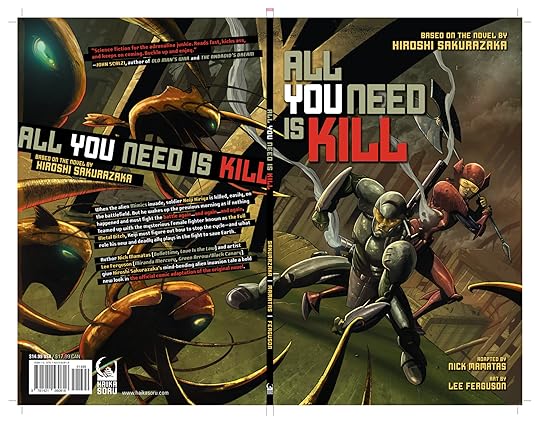
But don't worry; All You Need Is Kill is still rock-ribbed military science fiction, where right is right and the Other is wrong and violence solves problems (ask a Carthaginian, haha!) and a daring young man is going to kick some butt!

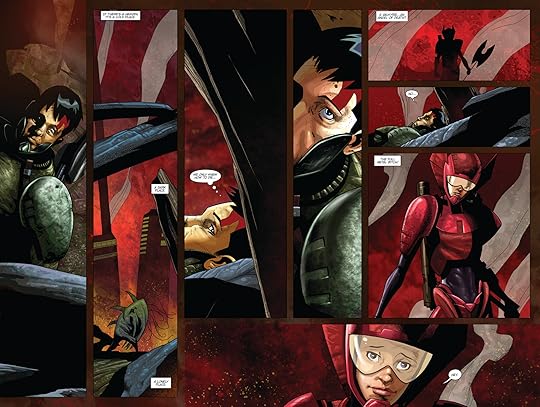
Well, someone's going to kick some butt anyway.
Check out the cover: the female lead isn't even attacking the aliens tits and/or ass first!

But don't worry; All You Need Is Kill is still rock-ribbed military science fiction, where right is right and the Other is wrong and violence solves problems (ask a Carthaginian, haha!) and a daring young man is going to kick some butt!


Well, someone's going to kick some butt anyway.
Published on July 18, 2013 15:24
July 17, 2013
Nick Mamatas's Blog
- Nick Mamatas's profile
- 246 followers
Nick Mamatas isn't a Goodreads Author
(yet),
but they
do have a blog,
so here are some recent posts imported from
their feed.



